Spaceship Earth and The Overview Effect
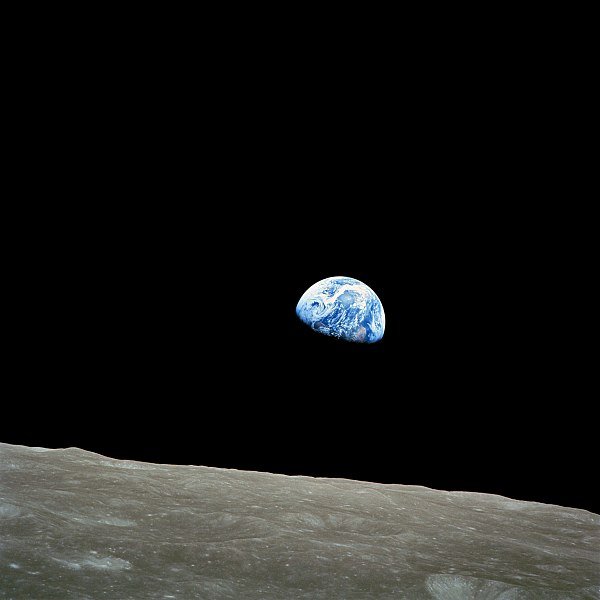
The Overview Effect
There are many things about our cosmic reality that we are not aware of on a day to day basis. Take for example the illusion that right now as you are reading this, perhaps sitting in an office chair or curled up on the sofa, that you are currently stationary. But of course, measurements of movement are relative - it's all about your perspective.
If you were standing on the equator, you would actually be moving at 1670 km/h as a result of the Earth’s rotation. And beyond that, the Earth is orbiting the Sun at a speed of 30 km/s, which is in turn tearing through the Milky Way at a dizzying speed of 200 km/s. That’s before even factoring in the speed of our local group of galaxies, which are travelling at an incomprehensible 1000 kilometres per second. To be honest, speaking as someone who gets motion sickness ridiculously easily, I’m very grateful that we don’t have to experience the reality of this firsthand.
However, there is a different cosmic reality that I think we could all stand to be much more viscerally aware of: the fact that we are all residents of a tiny, fragile, blue speck of dust, floating in the midst of endless, black nothingness. Although we can understand this intellectually, our daily experiences on this planet allow us to mostly live in complete ignorance of this information. It’s just not part of our subjective experience of living.
However, there is one group of individuals for whom this is not the case. Upon returning from their adventures in space, astronauts have frequently reported a radical shift in their cosmic perspective, an experience labelled by author Frank White as the overview effect. In his book ‘The Overview Effect: Space Exploration and Human Evolution’, White documents a phenomenon experienced by 30 different astronauts who have seen the Earth from space.
Once they had experienced firsthand the visual spectacle of the planet below them, small and blue and visibly alive, many astronauts reported a transformation of their perspective of the planet and the role of mankind in protecting it, accompanied by an experience of awe, euphoria and a sense of connection and oneness with all of life on Earth.
As I approached the top of this arc, it was as if time stood still, and I was flooded with both emotion and awareness. But as I looked down at the Earth — this stunning, fragile oasis, this island that has been given to us, and that has protected all life from the harshness of space — a sadness came over me, and I was hit in the gut with an undeniable, sobering contradiction.
In spite of the overwhelming beauty of this scene, serious inequity exists on the apparent paradise we have been given. I couldn't help thinking of the nearly one billion people who don't have clean water to drink, the countless number who go to bed hungry every night, the social injustice, conflicts, and poverty that remain pervasive across the planet.
Seeing Earth from this vantage point gave me a unique perspective — something I've come to call the orbital perspective. Part of this is the realization that we are all traveling together on the planet and that if we all looked at the world from that perspective we would see that nothing is impossible.
As with so many technologies and avenues of science that have been byproducts of space exploration, from camera phones and memory foam, to improvements in artificial limbs and land mine detection, a renewed sense of connection with our home planet was not something we anticipated when sending astronauts further away from it. As philosopher David Loy notes, in a short film called ‘Overview’ by the Planetary Collective:
It was quite a shock, I don't think any of us had any expectations about how it would give us such a different perspective. I think the focus had been, "We're going to the stars, we're going to other planets"... And suddenly we look back at ourselves and it seems to imply a new kind of self-awareness.
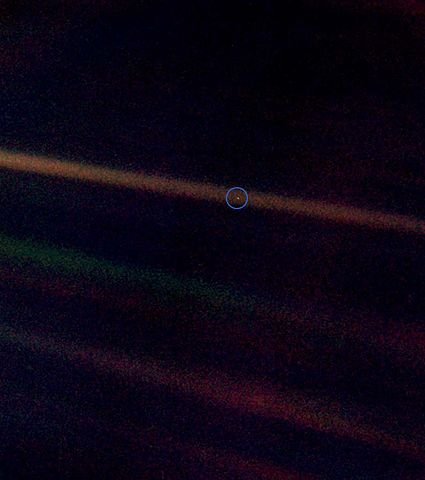
When watching ‘Overview’ and hearing these quotes, I was immediately reminded of Pale Blue Dot, a photograph of Earth taken by Voyager 1 in 1990 as it was leaving our solar system, from a distance of 6 billion kilometres. Voyager 1 was on a quest out into space beyond the solar system, and at the request of astronomer Carl Sagan, NASA got Voyager to turn its camera around and take one last photograph of Earth before it was no longer visible. The result is the photograph above. You can just about see it - that tiny speck of blue in a beam of sunlight. If you haven’t heard Carl Sagan’s speech ‘Pale Blue Dot’ then stop reading this article right this second and click here, because it’s so much better in his voice.
From this distant vantage point, the Earth might not seem of any particular interest. But for us, it's different. Consider again that dot. That's here. That's home. That's us. On it everyone you love, everyone you know, everyone you ever heard of, every human being who ever was, lived out their lives. The aggregate of our joy and suffering, thousands of confident religions, ideologies, and economic doctrines, every hunter and forager, every hero and coward, every creator and destroyer of civilization, every king and peasant, every young couple in love, every mother and father, hopeful child, inventor and explorer, every teacher of morals, every corrupt politician, every "superstar," every "supreme leader," every saint and sinner in the history of our species lived there – on a mote of dust suspended in a sunbeam.
The Earth is a very small stage in a vast cosmic arena. Think of the rivers of blood spilled by all those generals and emperors so that in glory and triumph they could become the momentary masters of a fraction of a dot. Think of the endless cruelties visited by the inhabitants of one corner of this pixel on the scarcely distinguishable inhabitants of some other corner. How frequent their misunderstandings, how eager they are to kill one another, how fervent their hatreds. Our posturings, our imagined self-importance, the delusion that we have some privileged position in the universe, are challenged by this point of pale light. Our planet is a lonely speck in the great enveloping cosmic dark. In our obscurity – in all this vastness – there is no hint that help will come from elsewhere to save us from ourselves.
The Earth is the only world known, so far, to harbor life. There is nowhere else, at least in the near future, to which our species could migrate. Visit, yes. Settle, not yet. Like it or not, for the moment, the Earth is where we make our stand. It has been said that astronomy is a humbling and character-building experience. There is perhaps no better demonstration of the folly of human conceits than this distant image of our tiny world. To me, it underscores our responsibility to deal more kindly with one another and to preserve and cherish the pale blue dot, the only home we've ever known.
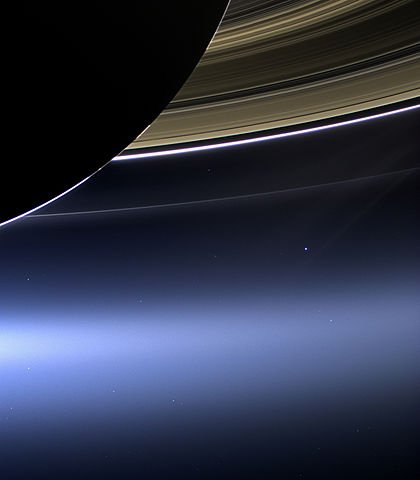
It also reminded me of photograph ‘The Day the Earth Smiled’, a more recent snapshot of Earth taken by the Cassini spacecraft in 2013, so called because it was the first time the inhabitants of Earth knew in advance that the photo was about to be taken. In the picture above, you can see Saturn and its beautiful ring system during an eclipse of the Sun, and Earth - a tiny white speck on the right hand side.
Spaceship Earth
Witnessing Earth in the backdrop of an infinite black abyss in this way, it is very easy to see how many have described our planet as Spaceship Earth. From this perspective, we suddenly become very aware that our seemingly vast Spaceship is actually small and fragile, and that the few resources we have on board are incredibly rare and precious.
“We travel together, passengers on a little space ship, dependent on its vulnerable reserves of air and soil; all committed for our safety to its security and peace; preserved from annihilation only by the care, the work, and, I will say, the love we give our fragile craft. We cannot maintain it half fortunate, half miserable, half confident, half despairing, half slave—to the ancient enemies of man—half free in a liberation of resources undreamed of until this day. No craft, no crew can travel safely with such vast contradictions. On their resolution depends the survival of us all.”
The term Spaceship Earth was popularised by Buckminster Fuller in his book ‘Operating Manual for Spaceship Earth’, where he described Earth as a spaceship voyaging through space with a finite amount of resources, which cannot be resupplied. He was particularly critical of our rapid and wasteful consumption of fossil fuels, worrying that we might “exhaust in a split second of astronomical history the orderly energy savings of billions of years' energy conservation aboard our Spaceship Earth”. The same concerns might now be applied to our destruction of the atmosphere via global warming; would we really be polluting our limited oxygen supply this way if we viewed Earth as a spaceship? Ron Garan, a NASA astronaut and author of ‘The Orbital Perspective’ described what it was like to see our atmosphere from space:
“It’s really sobering to see this paper thin layer and to realise that is all that protects every living thing on Earth from death basically, from the harshness of space.”
We need images and insights like the one above to illustrate to people that whilst our enormous blue sky might seem endless, and whilst it might seem impossible for our human activities to be causing that much damage, our planet’s atmosphere is actually incredibly thin. Other images, such as the one below, illustrate just how much impact our activities are truly having on the surface of the Earth. Astronauts living in the International Space Station can see all sorts of human activities with the naked eye, including the urban sprawl of cities, deforestation in the Amazon and melting ice shelves near the poles.
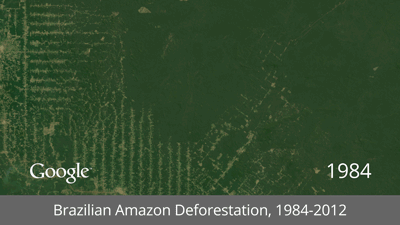
Chris Hadfield, the previous commander of the International Space Station, explains that his goal is to share this vision of Earth as, “one bubble of air that keeps us all alive, that we are responsible for”, and strives to remind us “just how close we are to each other”. This is a common message across many astronauts who have seen with their own eyes just how artificial and meaningless national boundaries truly are.
“You develop an instant global consciousness, a people orientation, an intense dissatisfaction with the state of the world, and a compulsion to do something about it." - Edgar Mitchell, NASA Astronaut
“Up there, hovering above Earth with my orbital perspective, I came to believe that the answer to why our world still faces so many critical problems — in spite of the ample technology and resources we have at our disposal — lies primarily in our inability to effectively collaborate on a global scale.” - Ron Garan, The Orbital Perspective
They share a common message that we must look beyond the intraspecies conflicts that divide us, in light of a more important task, the creation of a planetary society. A society with much work to do to protect our planet. As Frank White explains, “we have to start acting as one species with one destiny, we are not going to survive if we don’t do that.”
Virtual Reality
"Once a photograph of the Earth, taken from outside, is available, a new idea as powerful as any other in history will be let loose." - Fred Hoyle (1948)
Although these images have been available to the public for decades, unfortunately it seems that they haven’t had the impact hoped for by writers like Fred Hoyle in 1948. Whilst the individual astronauts who have experienced it firsthand have evidently been deeply affected, and the images have undoubtedly had a positive effect on many - the true hard-hitting impact is perhaps just not something that can be adequately captured in an image. However, is this something that virtual reality might be able to change?
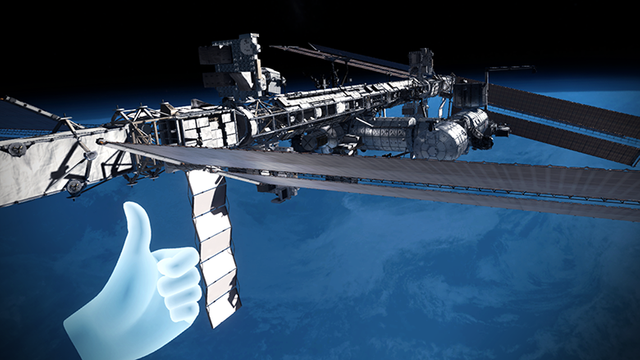
When I got my hands on the new Oculus Rift this summer, some of the first experiences I rushed to try out were the ones where I could explore space. I was not disappointed. After only a few minutes of exploring the International Space Station and going on my first space walk, I realised that this is an area where virtual reality has enormous potential. Virtual reality allows people to experience what it is like to actually be there and have these experiences from a first person perspective. To physically feel the vertigo as the planet turns hundreds of miles beneath you, your clammy hand nervously clutching the side of the space station to stop yourself from floating away into the void. To have a subjective personal experience of the overview effect, rather than just reading about it. Below are a few of my thoughts after experiencing virtual space travel for myself:
Hovering above the planet, I was suddenly struck by how the size of my own body and that of the planet were, for the first time, comparable in size. I could see Earth in its entirety, like another being hovering in front of me. The planet was now something I could relate to as a whole creature, rather than as a surface that I stand on and that dwarfs me. Is it because of this reduction in size that the overview effect creates this increase in empathy and stewardship? My perspective of Earth shifted. No longer an unfathomably huge land mass that goes on forever, it became a small ball of blue life, breathing in and out, alive and alone in a sea of darkness. Precious and delicate, and in need of our protection and care. Isn’t it ironic that perhaps we need to get this far away in order to really forge a close relationship with Earth? A bit like zooming out far enough that we can truly see her face for the first time.
There are many different virtual reality space experiences to explore, and in writing this piece I’ve decided that they deserve a full post of their own, so stay tuned for this in the next week or so. In the mean time if you get a chance to experience any type of trip to space in VR, I’d highly recommend it. The technology is here and it’s mind blowing. And as countless astronauts have observed, there is nothing more powerful than seeing it for yourself.
(This post is my own original content. All references and image sources are linked to within the text.)
Thanks for reading
I will continue to publish similar content in the upcoming weeks, so be sure to follow if you'd like more posts about philosophy, cosmology and consciousness. If you want to follow me elsewhere you can find me at:
Twitter - @ongoingwow
Medium - @ongoingwow
Instagram - @ongoingwow
My user name is an ode to Carl Sagan's pale blue dot. This idea that everything we are is so tiny compared to scale of the universe is amazing.
Nice username :D My cat is actually named Sagan too!
what a great name for a cat!!
Congratulations! This post has been upvoted from the communal account, @minnowsupport, by loofychan from the Minnow Support Project. It's a witness project run by aggroed, ausbitbank, teamsteem, theprophet0, someguy123, neoxian, followbtcnews/crimsonclad, and netuoso. The goal is to help Steemit grow by supporting Minnows and creating a social network. Please find us in the Peace, Abundance, and Liberty Network (PALnet) Discord Channel. It's a completely public and open space to all members of the Steemit community who voluntarily choose to be there.
@OriginalWorks
The @OriginalWorks BETA V2 bot has upvoted(0.5%) and checked this post!
Some similarity seems to be present here:
http://www.planetary.org/explore/space-topics/earth/pale-blue-dot.html
This is an early BETA version. If you cited this source, then ignore this message! Reply if you feel this is an error.